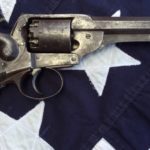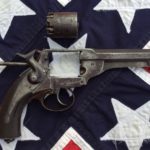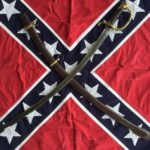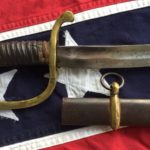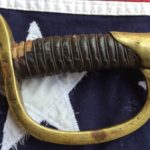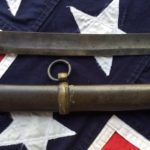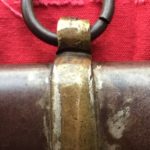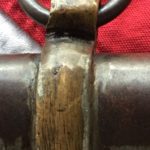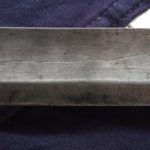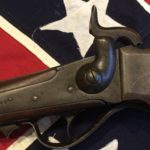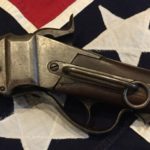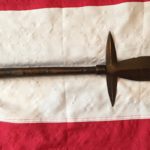- Kerr Revolver, Serial # 9900
- London Armoury Company Kerr Revolver
- Imported Kerr Revolver Fully Cocked
- Kerr Revolver, Rammer Lever
- London Armoury Company, Kerr Revolver # 9900
- Kerr Revolver, Left Side
- Kerr Revolver, No Viewers Mark
- Kerr Revolver & Cylinder
- Kerr Revolver Cylinder & Frame
- Kerr Revolver Cylinder
Over 9000 revolvers were purchased by the Confederate States in three variations. Most of the wood grips have the JS/anchor viewers mark below the trigger guard. The three variations are serial numbered as follows: 1st 1 – 1050, 2nd 1051 – 2700, 3rd 2701 – 11,500. The highest known serial number confirmed to date bearing the JS/Anchor mark is 9975.
The Kerr (pronounced Carr) was preferred in the field with its ease of maintanence and repair. Having a Lock Plate (similar to a Rifled Musket) built into the wood grip handle allowed for easy repair of its internal hardware with the removal of two screws. It wasn’t as prone to fouling as other revolvers, such as the Colt and Remington and its early pattern arbor pin retaining catch which allowed the user to change cylinders quickly without tools.
Some of the Kerr Revolvers have unquestionable provenance, serial # 1041 was presented by President Jefferson Davis to Captain Given Campbell as well as serial # 8977 which was presented to Colonel Josiah Gorgas, Confederate Chief of Ordnance by the London Armoury Company.
Well known pages from the pocket notebook (ledger) of Lieutenant G. Julian Pratt, Company H, 18th Virginia Calvary. In his ledger (Squad Roll) he documents the names of troops, revolver types, and serial numbers. Among the serial numbers mentioned in his ledger are Kerr Revolvers 9240, 9740, 9927, 9949, 9955, 9961 and 9974. He makes mention of other revolvers Adams, Tranter and Webley but we’ll save that for another time.
My new Civil War Arsenal weapon is a 3rd variation Kerr Revolver, serial number 9900. It’s in good condition for its age, however the cylinder plunger may have been replaced at one time. The wood handle is in good condition with no cracks but on the left side someone has used a small wood screw to hold the handle tight against the frame of the revolver. It’s not uncommon for the wood to separate a bit here which could lead to the grip cracking.
This revolver does not have the JS/Anchor found on so many of the Confederate imported Kerr’s. Revolver # 9974, which is in a private collection from the Pratt ledger (squad roll) doesn’t have JS/Anchor viewers mark either. It’s fair to say that this revolver #9900 which is only 74 serial numbers away from that revolver and only 27 serial numbers away the lowest revolver #9927 in the Pratt ledger (Squad Roll) is a surviving Confederate Import.
Thanks for stopping by the Civil War Arsenal, if you have any questions about this weapon or any of the other weapons in my Arsenal feel free to contact me at civilwararsenal@yahoo.com attn: Gene West and if you have any Confederate weapons you’re looking to part with let me know maybe we can strike a deal.



